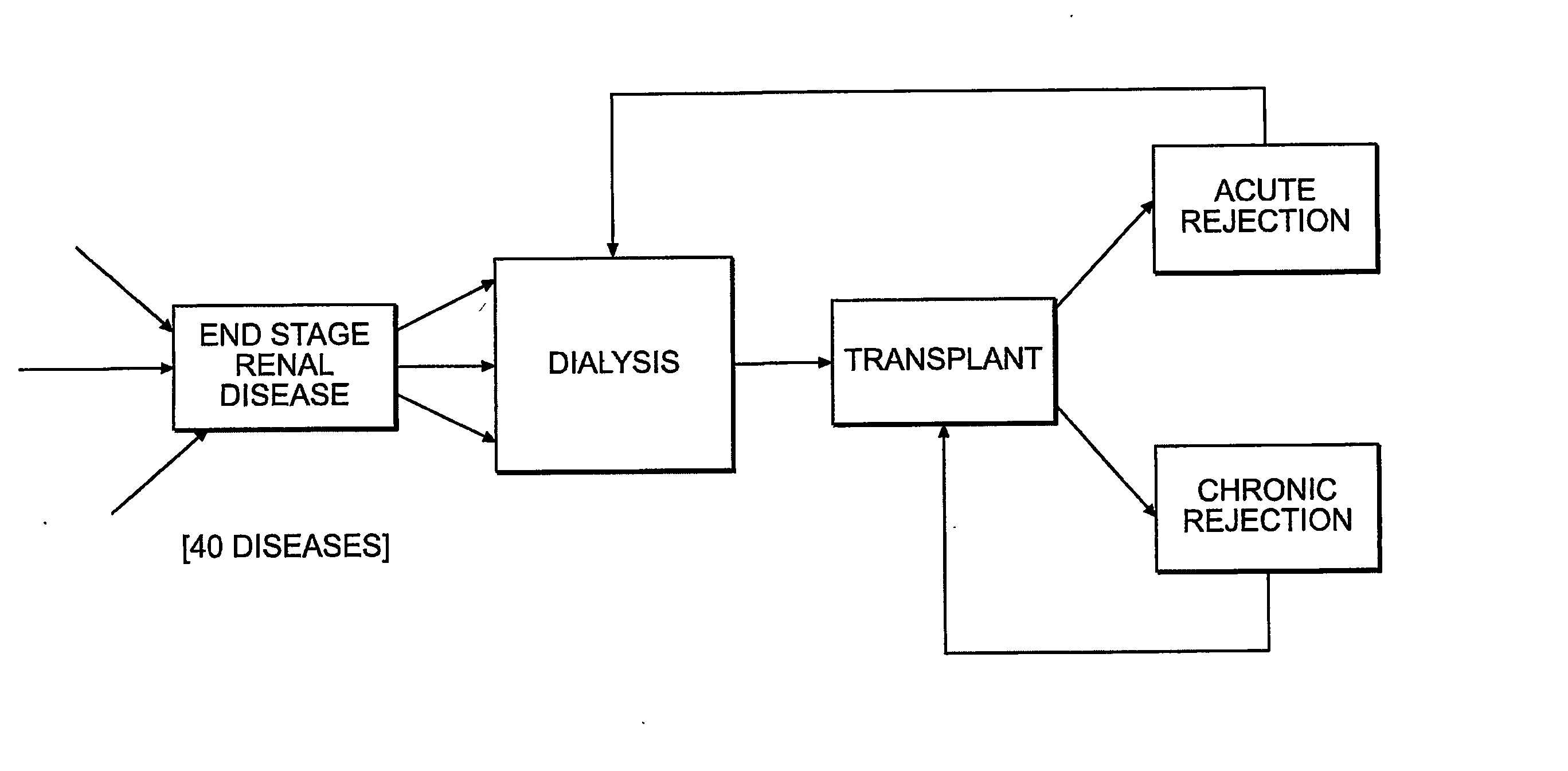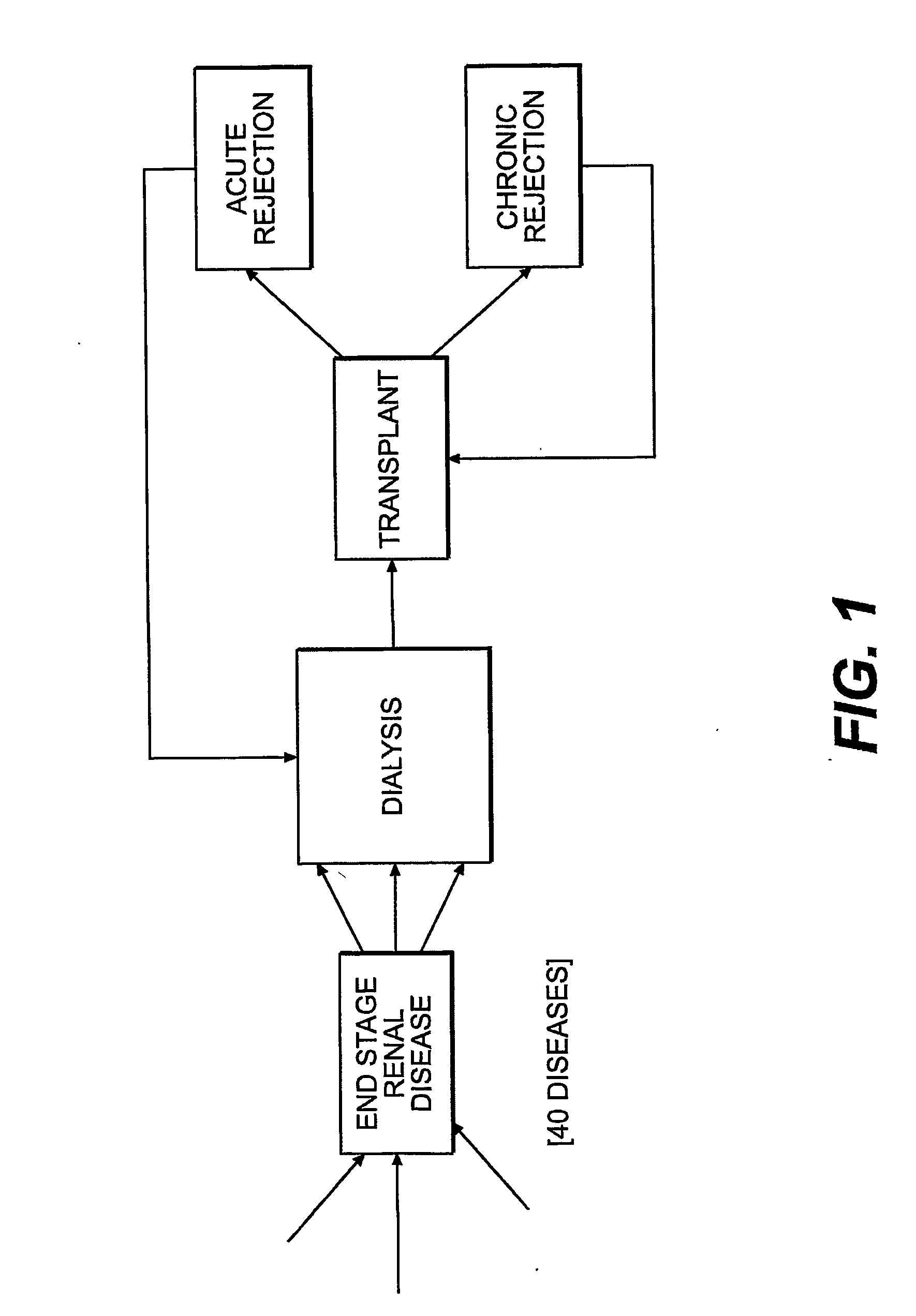Information processing method for disease stratification and assessment of disease progressing
a technology of information processing and disease progress, applied in the field of disease stratification, can solve the problems of ambiguity in how to stage a particular patient, rare complete models are available, acute rejection and kidney loss, etc., and achieve the effect of reducing the time spent repetitively
- Summary
- Abstract
- Description
- Claims
- Application Information
AI Technical Summary
Benefits of technology
Problems solved by technology
Method used
Image
Examples
Embodiment Construction
#1
[0084] Data for modeling were taken from public files for the Diabetes Control and Complications Trial, which are available via ftp on the Internet at gcrc.umn.edu / pub / dcct / . Records for 730 patients in the Standard treatment group were used, since the patients in the Experimental treatment group were artificially "synchronized" by the intervention of the trial. For each patient, ten annual measurements were extracted for four variables (i.e., I=1 . . . 730, j=1 . . . 4, k=1 . . . 10): (a) Hemoglobin A1C (a measure of blood-glucose control); (b) Retinopathy (ETDRS scale scores from fundus photographs, the fundus being the part of an eyeball); (c) Motor Nerve Velocity; and (d) Sensory Nerve Velocity. The latter two values are measures of peripheral neuropathy, another complication of diabetes. Missing values were filled from the most recent previous available value.
[0085] The algorithm previously described was used to cluster the patients into strata by employing time shifts to ali...
PUM
 Login to View More
Login to View More Abstract
Description
Claims
Application Information
 Login to View More
Login to View More - R&D
- Intellectual Property
- Life Sciences
- Materials
- Tech Scout
- Unparalleled Data Quality
- Higher Quality Content
- 60% Fewer Hallucinations
Browse by: Latest US Patents, China's latest patents, Technical Efficacy Thesaurus, Application Domain, Technology Topic, Popular Technical Reports.
© 2025 PatSnap. All rights reserved.Legal|Privacy policy|Modern Slavery Act Transparency Statement|Sitemap|About US| Contact US: help@patsnap.com



